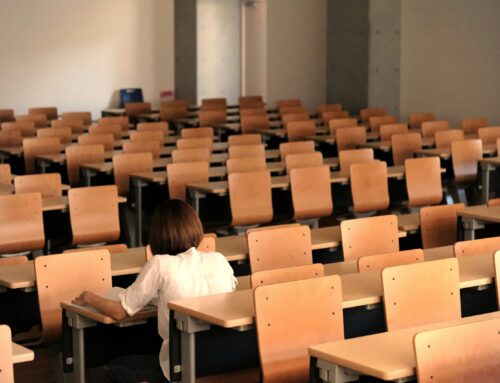 Small class sizes or low student-teacher ratios are frequently touted as a plus or an attractive aspect of higher education institutions. This is because with the smaller class sizes there is more time and space for professors to connect with students and for students to get additional attention if needed. However, the majority of K-12 classrooms across the country cannot say the same. Between the teacher shortage, underfunded districts, and spikes in enrollment, ensuring small class sizes is a challenge. A push towards making these a reality is eminent, as research clearly shows the educational benefits of doing so.
Small class sizes or low student-teacher ratios are frequently touted as a plus or an attractive aspect of higher education institutions. This is because with the smaller class sizes there is more time and space for professors to connect with students and for students to get additional attention if needed. However, the majority of K-12 classrooms across the country cannot say the same. Between the teacher shortage, underfunded districts, and spikes in enrollment, ensuring small class sizes is a challenge. A push towards making these a reality is eminent, as research clearly shows the educational benefits of doing so.
Currently, it is difficult for educators to meet the mental and academic needs of students in larger classrooms.[1] Teachers are unable to fully connect with their classes, which is an important part of maintaining an orderly classroom and ensuring student success. Educators also do not have sufficient time for planning, as they may often have to cover another class, undertake certain administrative duties, or even simply have another class themselves.[1] Parents and teachers both have observed and experienced the challenges with large class sizes and have advocated for reducing them. There have been dozens of teacher strikes and union negotiations for a reduction in class sizes across many districts.[1]
One definite obstacle is the financial cost of decreasing class sizes. Large and increasing class sizes across the country save around $12 billion a year in teacher salaries.[2] Regardless of the potential cost increase and despite differing results due to a variety of factors such as methodology “it appears that very large class-size reductions, on the order of magnitude of 7-10 fewer students per class, can have significant long-term effects on student achievement and other meaningful outcomes.”[2]
In spite of these challenges, these demands have been met in some places but many find such changes inaccessible, and have turned to alternatives. One of these is to add funding to a school for every additional student in a class over a designated number or to hire new support staff.[1] This does not appear to be enough as teachers continue to be overworked, exhausted and are leaving the profession in hordes.[1] Simply increasing teacher salaries—which would correctly value their labor—would not fully mitigate the effects of having these larger classes either.[1] It would certainly make the profession more attractive but it wouldn’t immediately make qualified instructors available in the numbers necessary, nor would there be sufficient support from districts to retain instructors. In the past, states have attempted to inflate teacher posts with untrained and unqualified teachers in the hopes of reducing class sizes, but it ends up having adverse effects.[3]
Yet the benefits of having smaller classes of students has been extensively documented. One study that is frequently cited from 1985 showed that students who were in smaller classes were ahead of their peers by 5-24 months in academics and interpersonal skills.[3] This advantage remained in place for years after, showing that the benefits of having smaller classes in the formative years, even if they eventually join larger groups, are long-lasting. Another study conducted in 1996 confirmed these results.[3] Since then, many other studies have been conducted that seem to reach similar positive conclusions. One of these specifically notes that “a smaller class size allows the instructor to deliver a more tailored education, which increases the likelihood of meeting each student’s requirements and concerns.”[4] They reinforce that small class sizes can have “positive long-term educational outcomes.” It is also indispensable that the teachers hired to teach the classes that would be created are accredited, well-trained, and have some level of experience with managing groups of students.[3]
Decreasing class sizes is a crucial investment in the future of education. Despite the cost and the challenges of filling vacant teaching positions, smaller class sizes foster better student engagement, individualized attention, and improved academic performance. Prioritizing this would ensure that students get the educational experience they need.
PSG
Publishing Solutions Group recognizes the significant benefits of smaller class sizes in K-12 education and the challenges in implementing these positive changes. Our commitment is therefore to understand both the changes and new initiatives that take place across the educational landscape and for to continue creating and delivering quality and well-polished materials for your clients that support and empower educators and support student learning success.
[1] https://www.nea.org/nea-today/all-news-articles/class-sizes-growing-issue-among-educators
[2] https://www.brookings.edu/articles/class-size-what-research-says-and-what-it-means-for-state-policy/
[3] https://www.usnews.com/education/k12/articles/does-your-childs-class-size-matter
[4] https://pmc.ncbi.nlm.nih.gov/articles/PMC11002959/
Free to use under the Unsplash License




